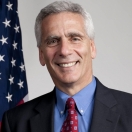
Here at the White House, those of us on team Recovery Act put a very high premium on transparency and accountability. Like they say, "sunlight’s the best disinfectant," and when it comes to tracking the $787 billion economic stimulus plan, our view is that we should let the sunshine in.
Well, today, we’re happy to report that the independent Recovery Accountability and Transparency Board—they’re the folks who bring you www.Recovery.gov—has taken yet another step toward showing the American people their money at work. The board released its very first report on the small portion of Recovery Act spending that recipients have reported on so far, and these preliminary data show that the Act is doing just what it’s supposed to do: helping to put Americans back to work, while partially offsetting the ongoing job market impact of the worst recession in decades.
The RAT Board (sorry, but that’s the acronym) reported today that the first $16 billion of Recovery Act spending—that’s about 2% of that total Act—saved or created more than 30,000 jobs. That’s $16 billion in direct jobs from contracts the Federal government has bid out to private-sector contractors.
Here, for example, are some of the projects and jobs recipients are telling us about:
- In Stockton, California, the San Joaquin Regional Rail Commission reports that they’ve contracted for 125 workers to lay rail track and do signal work on the Union Pacific Railroad.
- Down in Florida, Hamilton Roofing, inc. reports that they have 40 roofers, sheet metal workers, and crane operators at work repairing the roof at the Cape Canaveral Air Force Station.
- In South Plainfield, New Jersey, Sevenson Environmental Services, Inc. reports that they have 37 laborers and heavy equipment operators working at good union jobs, with living wages and health benefits, cleaning up a heavily polluted Superfund site.
- At the Marine Corps Recruit Depot in San Diego, California, the Syska Hennessy Group reports that they’re employing 36 electricians, roofers, and other workers installing solar panels on the roof of 16 buildings at the base.
Reports like these demonstrate a level of accountability never seen before in tracking a national project of this magnitude—we’re tracking Recovery Act spending down to the project, down to the job, down to the street address where the work was done. The Board has really raised the bar here.
Again, these are preliminary data—we’ve got a lot more data collection and analysis to do—but they point to a couple of positive outcomes. First, if you extrapolate from this reporting to the bigger picture, this data appears to confirm that we’ve created or saved around one million jobs so far, which is just about what our own estimates and those of private sector forecasters have found using the types of methods our Council of Economic Advisors describes here.
Second, these reports cover only direct, tangible jobs created by recipients, which means there are even more jobs created when those folks go out and spend their new earnings—the so-called multiplier effect.
There’s a lot more of this kind of reporting to come. The Board will be making a much more significant announcement, covering about 10 times as much money and including more different types of Recovery Act spending (like spending directly by the states), on October 30th. With that release, we’ll be able to give you an even more detailed picture of the Recovery Act at work.
Jared Bernstein is Chief Economist to Vice President Biden, and Executive Director of the Middle Class Task Force


